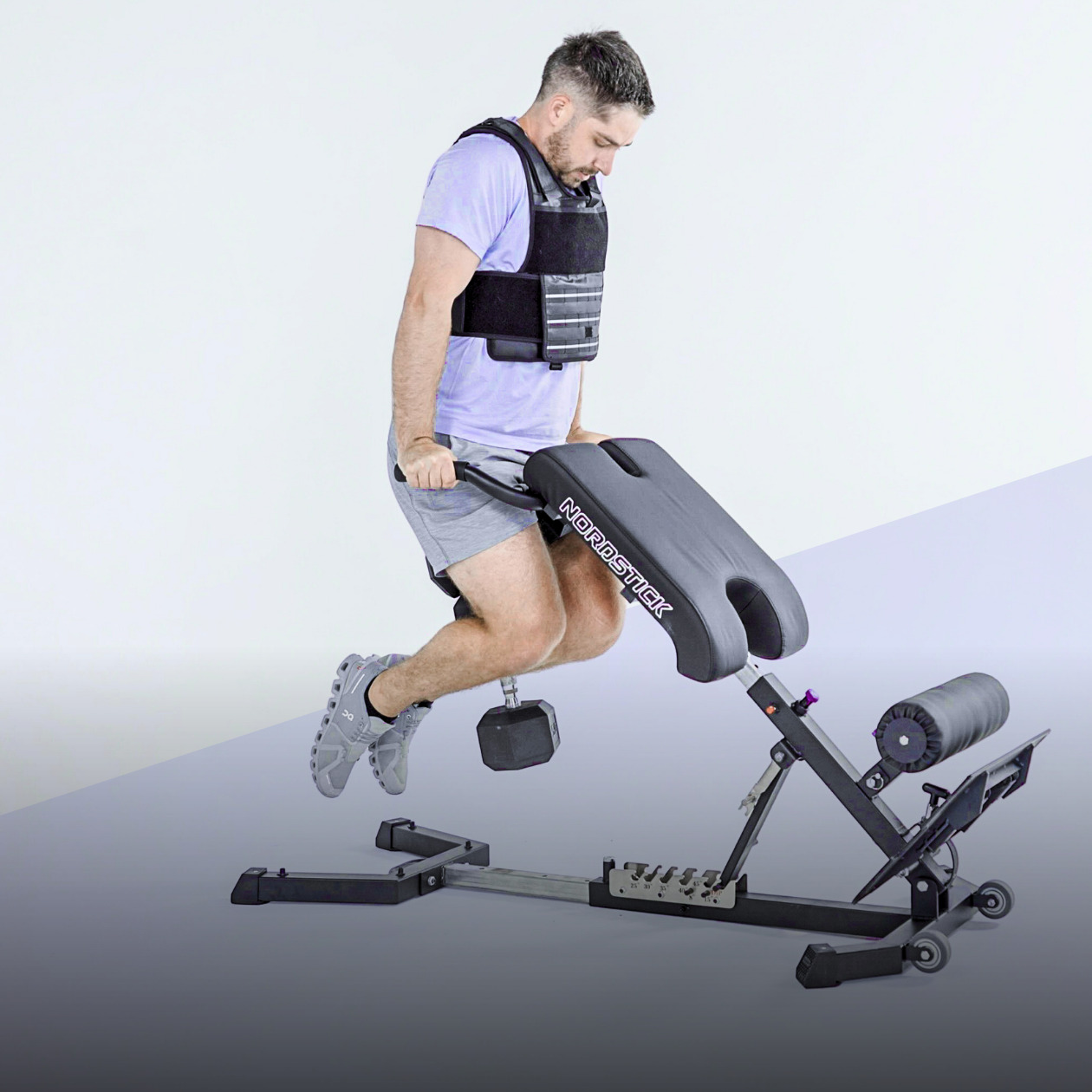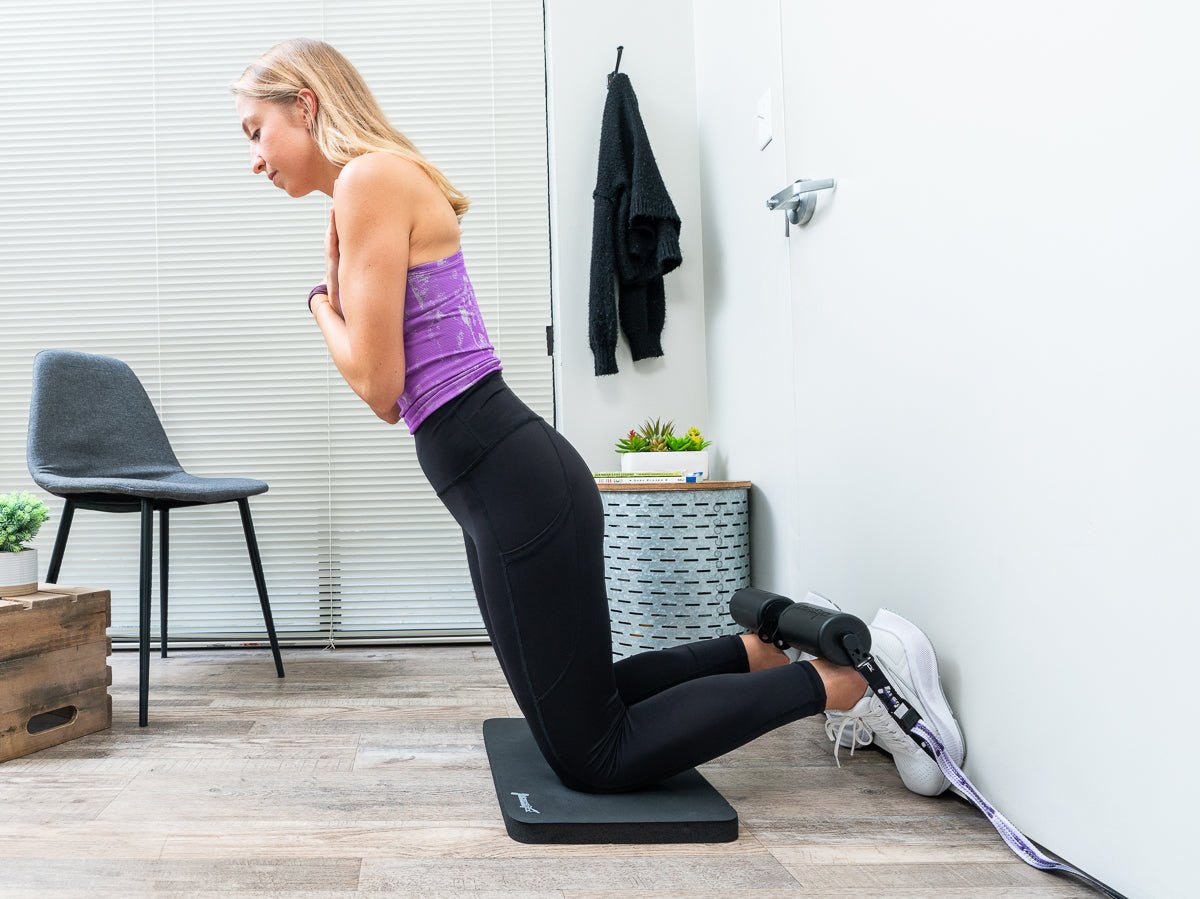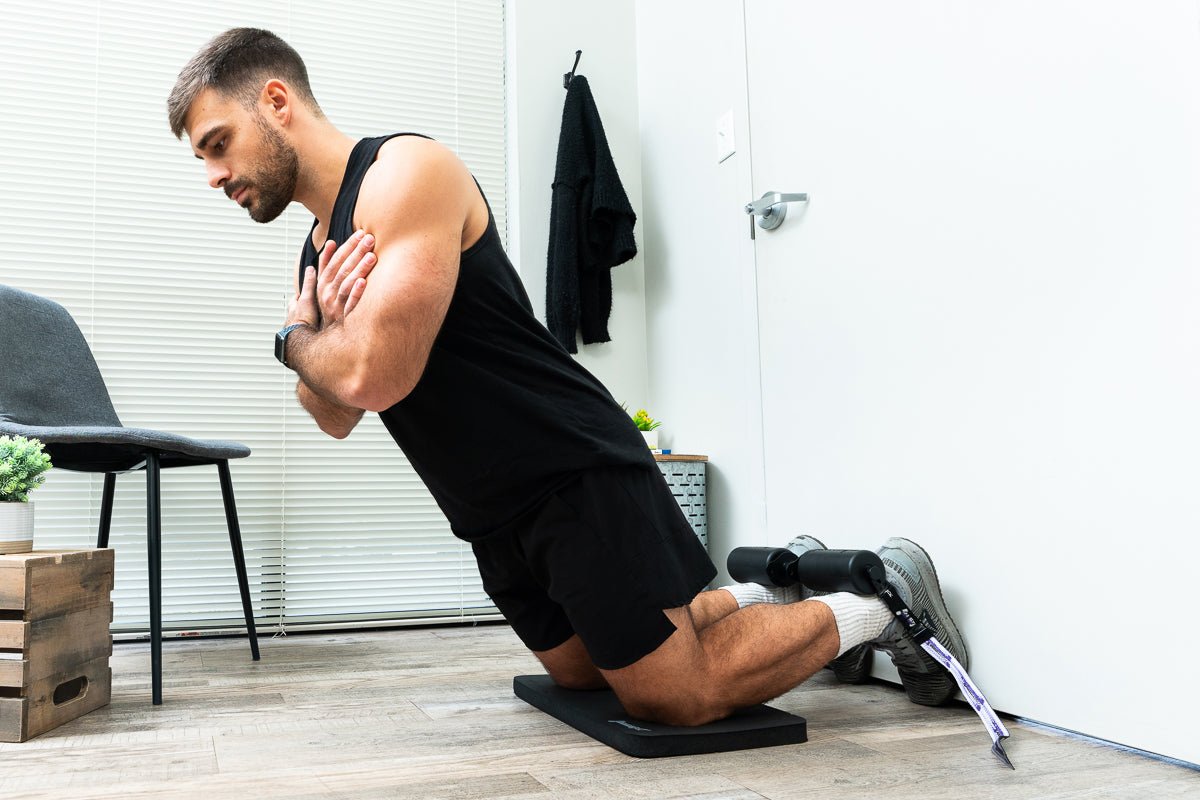Hey there, Nordstick Fam! Today, we're diving into a workout gem that often flies under the radar: isometrics. Despite being overlooked in many gyms and rehab clinics, isometric exercises are incredibly effective and probably missing from your routine!
Isometrics: The Key to Strength
So, what’s the deal with isometrics? Imagine an exercise where your muscles are working hard, but without the usual contract-relax movement. Think of holding a plank or freezing halfway through a push-up. You’re not moving, but you can feel the burn!
Why are these static exercises so beneficial? It’s all about time under tension. The longer your muscles stay engaged, the stronger they become. Isometrics can transform a regular workout into a powerhouse of strength. Studies have shown that isometric exercises significantly increase muscle strength and improve joint stability, making them an ideal addition to any fitness routine (MDPI) (Lift Big Eat Big).
Combining Isometrics and Nordic Curls
Now, let’s take our isometrics and mix them with Nordic curls. This combo creates a workout with maximum benefits.
When performing Nordic curls, try pausing at the toughest point (usually when your body is parallel to the floor). Hold this position for a few seconds before completing the move. This increases the time under tension, boosting your strength and muscle gains.
The body control you develop from these isometric holds? Incredible! You’ll improve your stability and joint health, all with just a Nordstick.
The Benefits of Isometrics and Nordic Curls
Recent studies have shown that isometric exercises can significantly increase muscle strength and endurance. For instance, research from the Journal of Sports Science & Medicine highlighted that isometric training resulted in substantial improvements in muscle strength and joint health (Mayo Clinic). Meanwhile, Nordic curls are renowned for their ability to prevent hamstring injuries and enhance overall lower body strength. Research from the British Journal of Sports Medicine indicates that incorporating Nordic curls into your routine can reduce hamstring injury rates by up to 51% (MDPI).
Wrapping Up
Isometrics and Nordic curls are a dynamic duo in strengthening your body and reducing the likelihood of injuries. Combining them creates a routine packed with benefits and serious potential.
Adding isometric holds to your Nordic curls makes each rep more challenging and rewarding. You’ll shake up your routine, challenge your muscles in new ways, and maximize your workouts.
So why not give this combo a try in your next workout? Your body will thank you. And remember, keep fitness fun!
Until next time, stay strong and keep moving!
Bonus: More Exercises That are BETTER With Isometric Hold
Wall Sit
The wall sit is a simple but highly effective isometric exercise that targets the muscles of the lower body, especially the quadriceps, hamstrings, and glutes.
Execution:
- Stand with your back against a wall.
- Slide down until your knees are at a 90-degree angle, as if sitting on an invisible chair.
- Hold this position for as long as you can, aiming for at least 30 seconds to start, and gradually increase the duration as you build strength.
Benefits: The wall sit helps in building muscle endurance, improving stability, and enhancing strength in the lower body. It's also a great exercise for individuals looking to strengthen their legs without putting too much strain on their joints.
Plank
The plank is a core exercise that involves maintaining a position similar to a push-up for the maximum possible time. It primarily targets the abdominal muscles, but also engages the back, shoulders, and legs.
Execution:
- Start in a push-up position with your forearms on the ground and elbows directly below your shoulders.
- Keep your body in a straight line from head to heels, avoiding sagging or arching your back.
- Hold this position, focusing on engaging your core muscles, for as long as possible.
Benefits: The plank enhances core strength, stability, and endurance. It also supports better posture and helps prevent back pain by strengthening the muscles around the spine.
Incorporating these isometric holds into your routine can significantly boost muscle endurance and overall strength, making your workouts more effective and efficient.
Sources:
Lift Big Eat Big. (n.d.). Isometrics for strength & hypertrophy. Retrieved from https://liftbigeatbig.com/isometrics-for-strength-hypertrophy/
MDPI. (2022). Isotonic and isometric exercise interventions improve the hamstring muscles’ strength and flexibility: A narrative review. Healthcare, 10(5), 811. https://doi.org/10.3390/healthcare10050811
Mayo Clinic. (2023). Isometric exercises: Good for strength training? Retrieved from https://www.mayoclinic.org/healthy-lifestyle/fitness/expert-answers/isometric-exercises/faq-20058186







































Leave a comment
This site is protected by hCaptcha and the hCaptcha Privacy Policy and Terms of Service apply.